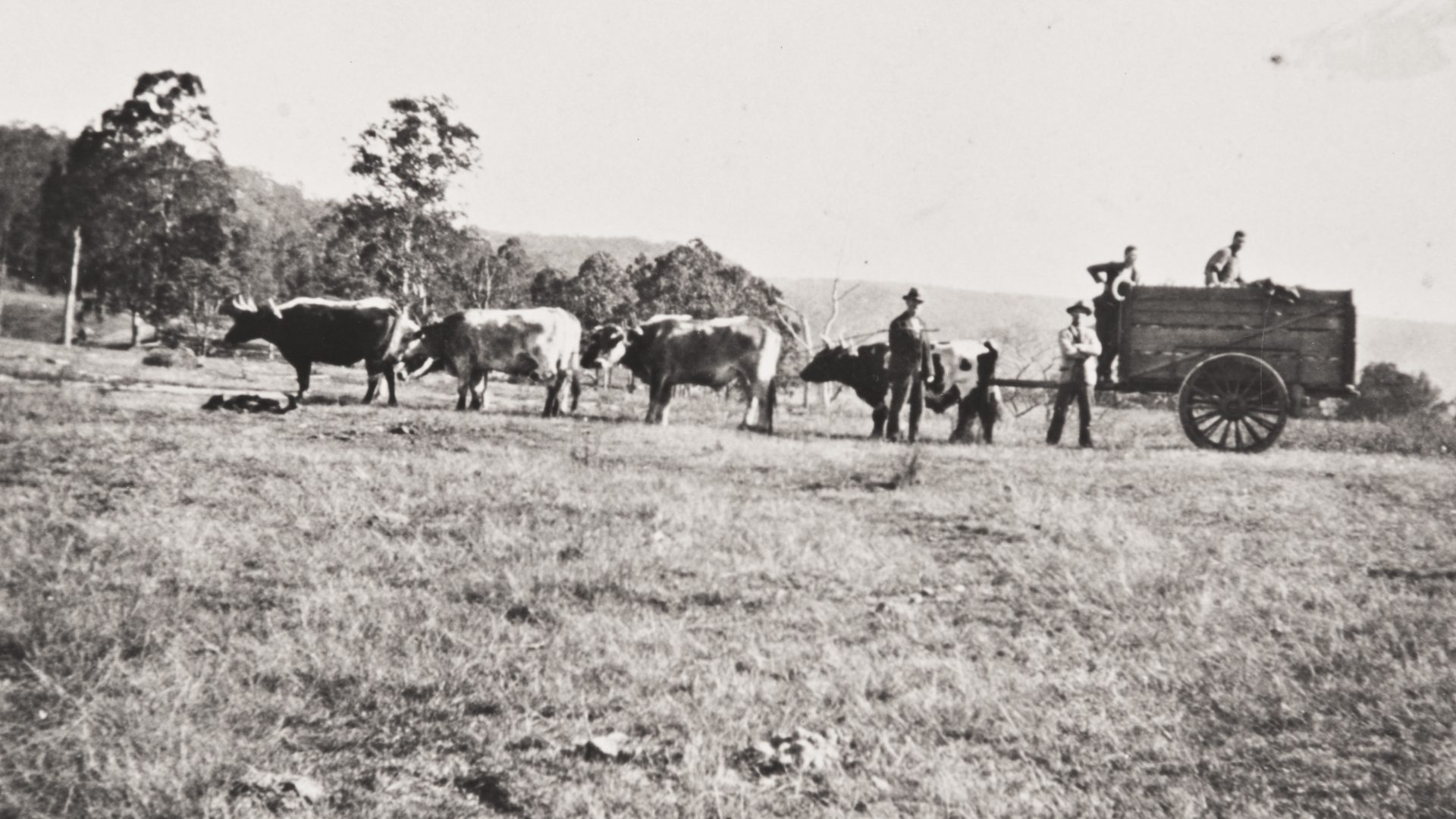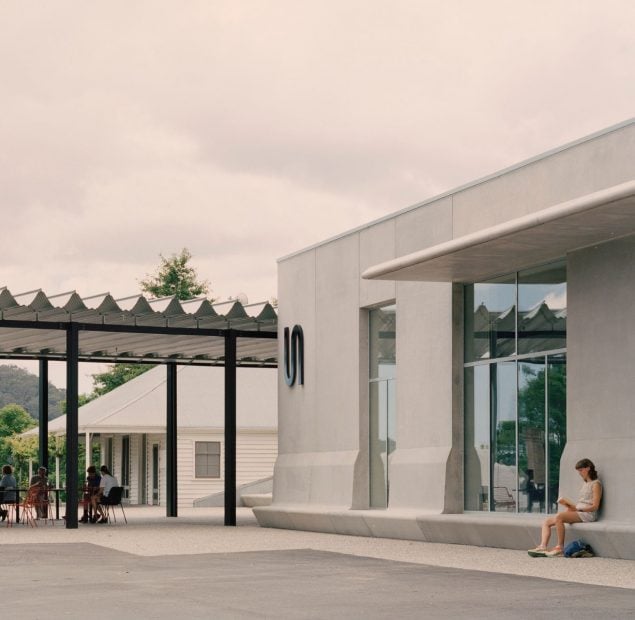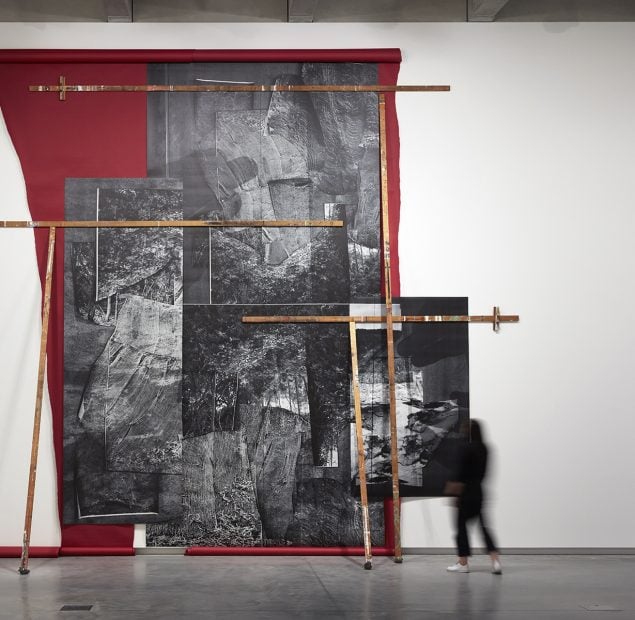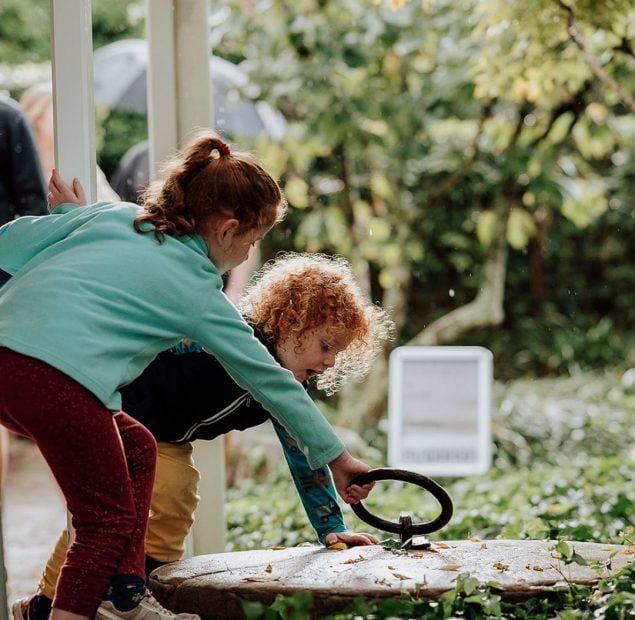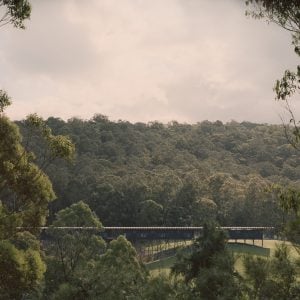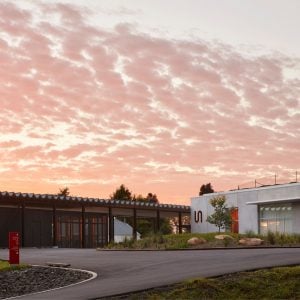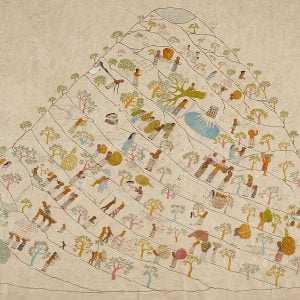The shallow valley between the main house and higher ground provided a sheltered microclimate for vegetable gardens, orchard and fowl house and poultry.– Peter Freeman. Extract from The Bundanon Trust Properties, Heritage Management Plan, Vol 2, p26 1997
The Bundanon site was occupied by the Mackenzies from around 1838, 28 years prior to the completion of the existing Homestead. The original cedar house on the ridgeline overlooked a working farm which established the land use patterns that largely remained for the following century.
The dairy is mentioned in a letter from Hugh Mackenzie to his sister after the flood of 1870 as one of the property structures. He also mentions the cooling dishes and cheeses, most lost in the flood. There is substantial stone paving visible in the grass area, now a rose garden, to the south of the homestead which indicates the site of the original dairy.
From the early 1900s the herd of Jersey and Illawarra cross cattle was normally milked by three people. Milking took place daily, beginning at 3 am and then again at 3 pm. Milk was taken to the factory at Bomaderry every day at 7.30 am using the punt. The mail, bread and meat for the property were collected in town. When it was not possible to cross the river, milk was separated into cream and skimmed milk (whey). The latter was fed to the twenty to thirty pigs held on the flats.
Bundanon continued to be run as a dairy farming property up until the Warren family left in 1968.
Seasonal water courses probably established the position of two (possibly three) dams which were created at Bundanon in the nineteenth century around the site of existing lagoons.
The current dam was most likely completed prior to 1870. Around 1945 it was lowered by the Martin family.
With the landscaping of the area around the Homestead the McGraths and McDonald also landscaped the dam. By 1970 an island was built in the dam to provide habitat for the native ducks and weeping willows added to the plantings surrounding this water source.
Located across the lagoon, the Singleman’s Hut provided permanent accommodation for one person. Originally there was a second identical room for overnight visiting workers. Each room held an iron bed and mattress, table, billy can and pannikin (tin mug), cutlery, tea and sugar and tin of biscuits; a built-in timber cupboard at the side of each fireplace provided storage.
The smokehouse and produce store were also used as Dr Mackenzie’s surgery. From the 1890s it became the school for the children at Bundanon and others from nearby properties.
The Henry children also used the school from the late 1920s. Local resident Charlie Weir attended school at Bundanon when his family moved there for work in 1933, when he was five years old. Miss Edna Henry, daughter of the Henry family, was the teacher.
With Bundanon being largely self-sufficient by the 1890s, work on the farm was demanding and varied, as attested to by the many fenced paddocks, assortment of working buildings and accommodation for workers and their families.
Activities on the farm included fencing, tending and harvesting crops, running the dairy, looking after livestock, feeding and housing the many people who lived and worked at Bundanon.
In the 1950s the Scott family grew lucerne hay, cutting huge amounts daily for up to 100 milking cows. The Jersey/Friesian cross cattle produced milk richer in butterfat but lower in volume, by approximately 200 gallons per day.
New cropping areas were developed to the north and west of the homestead with the need to increase production. The river flats were intensively cultivated for corn with over 200 three-bushel bags produced for Kellogg’s at £1 per bushel (one bushel is approximately 36 litres). At this time the property still retained two worker’s cottages, six rooms for staff, a well-equipped schoolroom and the Singleman’s quarters in addition to most early homestead structures.

